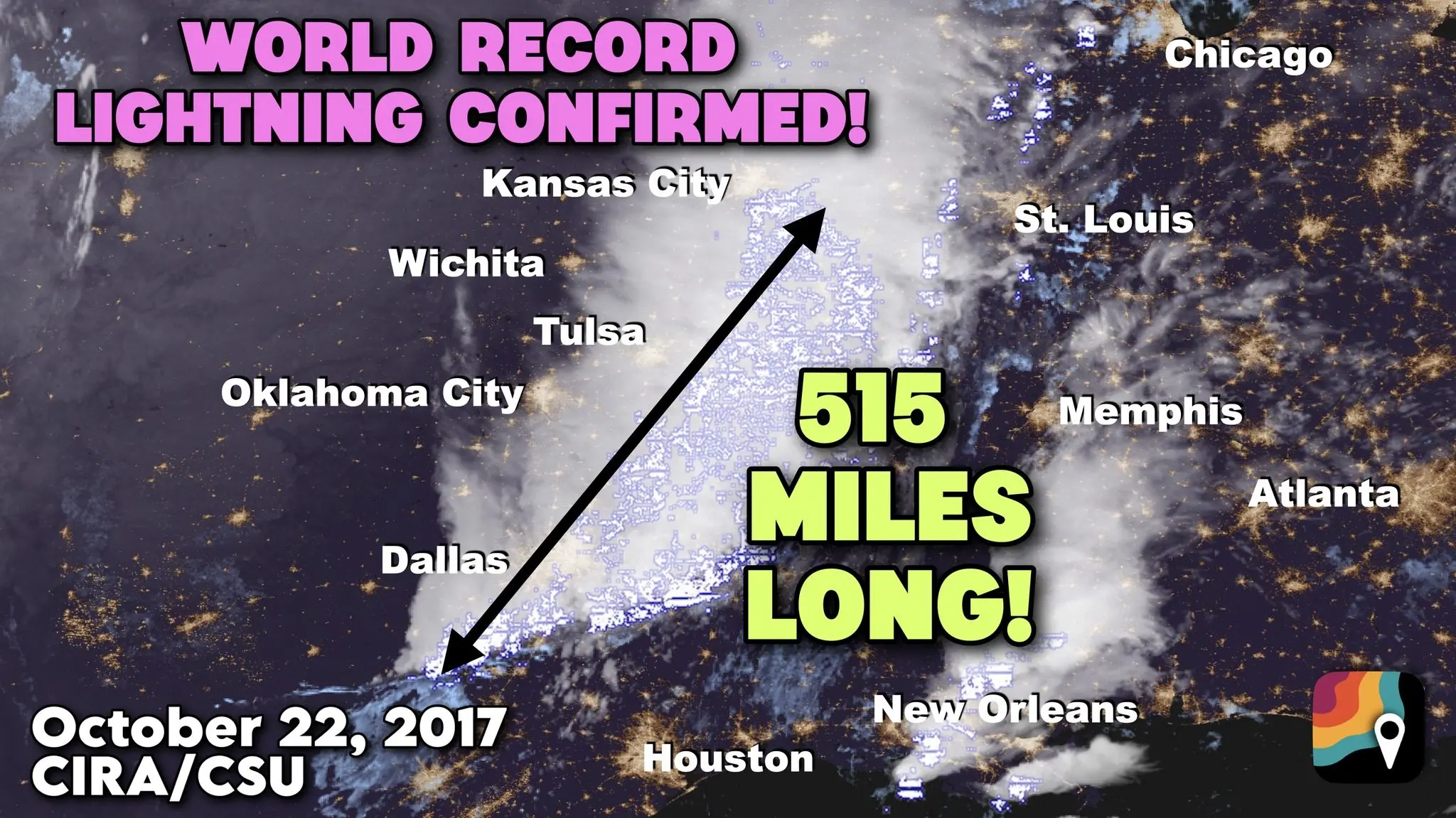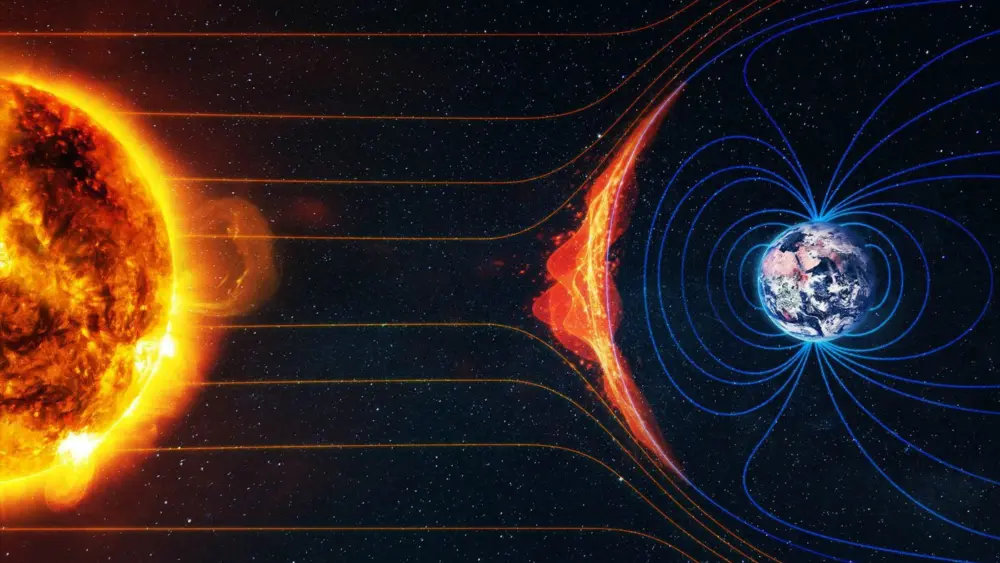A world record 515 MILE-LONG lightning bolt has been confirmed over parts of Texas, eastern Oklahoma, northwest Arkansas, southeast Kansas and southwest Missouri!
The World Meteorological Organization announced the discovery on Thursday. The strike occurred on October 22, 2017, but was only more recently discovered in data from the GOES East weather satellite. Researchers call these enormous discharges “megaflashes”. Conventional ground-based lightning detection networks can only detect ground strikes. By using satellite data, scientists were able to peer down from 22,236 miles above Earth’s surface. That allowed researchers to determine that a SINGLE discharge stretched from east of Dallas all the way to near Kansas City. Much of the discharge occurred within the clouds, but the same bolt also branched off and struck the ground in 64 different locations!
How long is 515 miles? The equivalent is Boston to the Outer Banks, or from Brownsville, Texas to the Oklahoma border. To get massive bolts, you need to have horizontally-extensive storm complexes. We call those MCSs, or mesoscale convective complexes. Storms are “only” 10 to 12 miles tall at most, but large-scale complexes can be hundreds of miles long. A region of charge can spark a discharge, or bolt, in one cloud that can “crawl” through the remainder of the complex. The new record beats a 477.2 mile-long bolt that discharged across parts of the southern Plains on April 29, 2020. “These new findings highlight important public safety concerns about electrified clouds which can produce flashes which travel extremely large distances and have a major impact on the aviation sector and can spark wildfires,” World Meteorological Organization secretary-general Celeste Saulo said in a statement about the discovery. Megaflashes are also known to be long in duration. On June 18, 2020, an enormous bolt spent a total of 17.1 seconds discharging over Uruguay and northern Argentina. “The duration of this flash was over 7 seconds,” wrote Randy Cerveny, a researcher and professor at the University of Arizona, in an email. In its new announcement, the WMO also referenced two other lightning records — both for fatality counts from single strikes. In 1975, 21 people in Zimbabwe were killed by a bolt as they huddled inside a hut for safety. And in 1994, 469 people were killed in Dronka, Egypt when lightning struck a set of oil tanks, sparking a fire and causing burning oil to flood the town.
(Thanks to MyRadar & Matthew Cappucci For The Info!)










